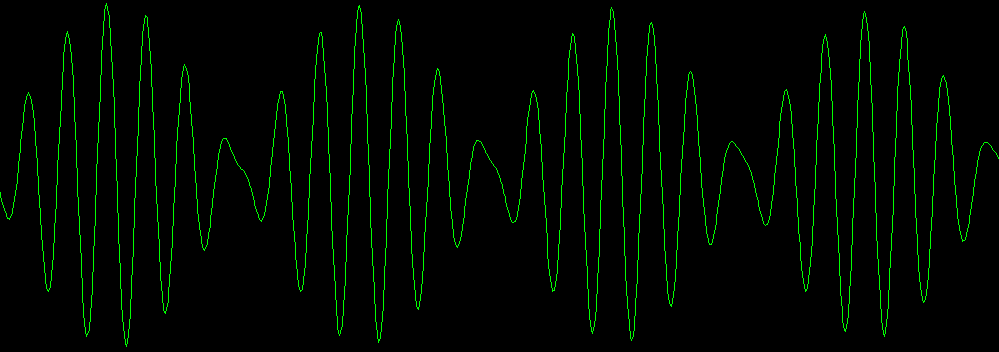
A few weeks ago I helped myself to some great equipment: A four channel Digital Storage Oscilloscope with function generator. So, to check it out, I wanted to try some very naive measuring. I hooked the function Generator up to a 62uH coil and measured the output signal. The schematic would look something like this:

then I started the function Generator with a sine wave of 1V at 200 Hz. The output was as you might guess, just a sine wave with 1V at 200Hz:

Now that was working, kind of what was expected, but also a bit boring. Lets turn up the frequency and see what happens:

Well, what is that? More output voltage, than input? How did that happen? Let's increase the frequency some more and see what happens:
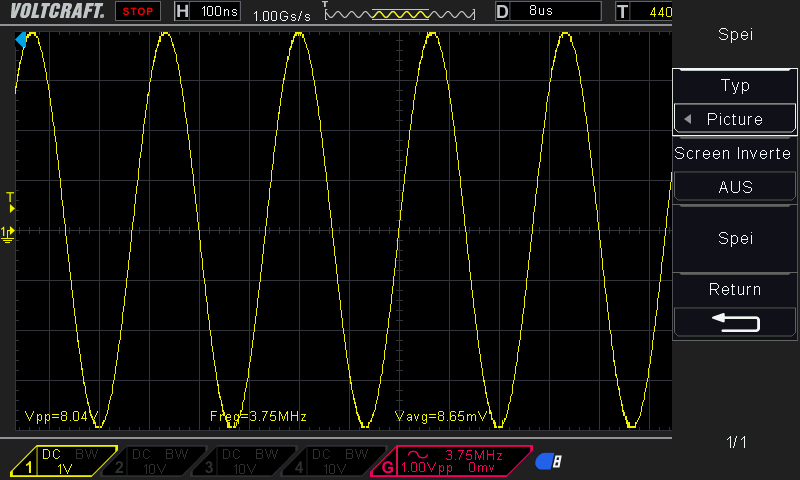
Alright! Eight times as much voltage out than in! Now that is something! Perhaps, we can get some more power by turning it up some more?
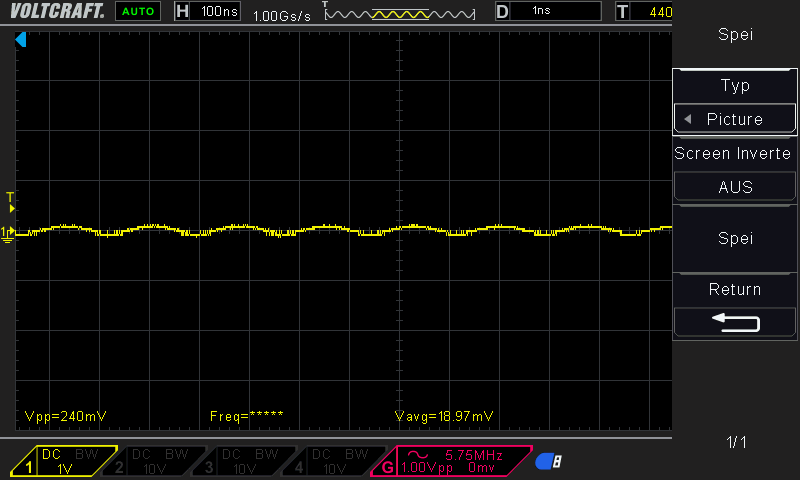
What? Where did all the voltage go? Nothing there anymore? To get a bit more inside, lets try to do some simulations. A great piece of software to do simulations of circuits is LTSpice, a free GUI based SPICE circuit simulator. It is now owned by Analog Devices, but was initially developed by Linear Technology. This is why the libraries it comes with consists of Linear Technology parts. There are good Tutorials for LTSpice all over the web. You basically just put together your circuit, define the type of simulation you want to do and then have the possibility to put a probe anywhere on the circuit. In the screenshots the probe-icon was not captured, so you have to look for where the mouse is to see where I put the probe. And always important with SPICE: Always have a GND in your circuit!

Now at 200Hz, everything looks like before. Lets Try a higher frequency.

Ok.. Now 3780kHz is around the frequency we first saw something happen before.. But not here?

Hmm, also nothing at 15MHz. What is happening?
Now, lets try to understand this. Of course those of you who know how to work with an oscilloscope probably shook your head by the initial setup. You would not put your probe at the output of the device you want to measure without having a proper circuit! Because what happens is that you close your circuit with your probe. That means, that the probe is now part of the circuit and everything after that as well, meaning the rest of the oscilloscope! To make a better measurement, you would either connect the coil directly to GND, or ground it over a resistor. The way we did it before, the coil is grounded over the probe and the oscilloscope, leading to the interesting effects we saw. Now how does that work?
In the simplest setup, the connection to GND is over the probe. The datasheet of my probe tells me, that it has a resistance of 1MOhm and a parallel capacitance of 20pF. If you hook that up in parallel to a circuit in which lower frequencies than the upper limit of the oscilloscope occur, everything should be alright most of the times. BUT, if you hook it up in series, you have all these funny little things happening from before. Let's see, if we can recreate those by using an equivalent circuit:
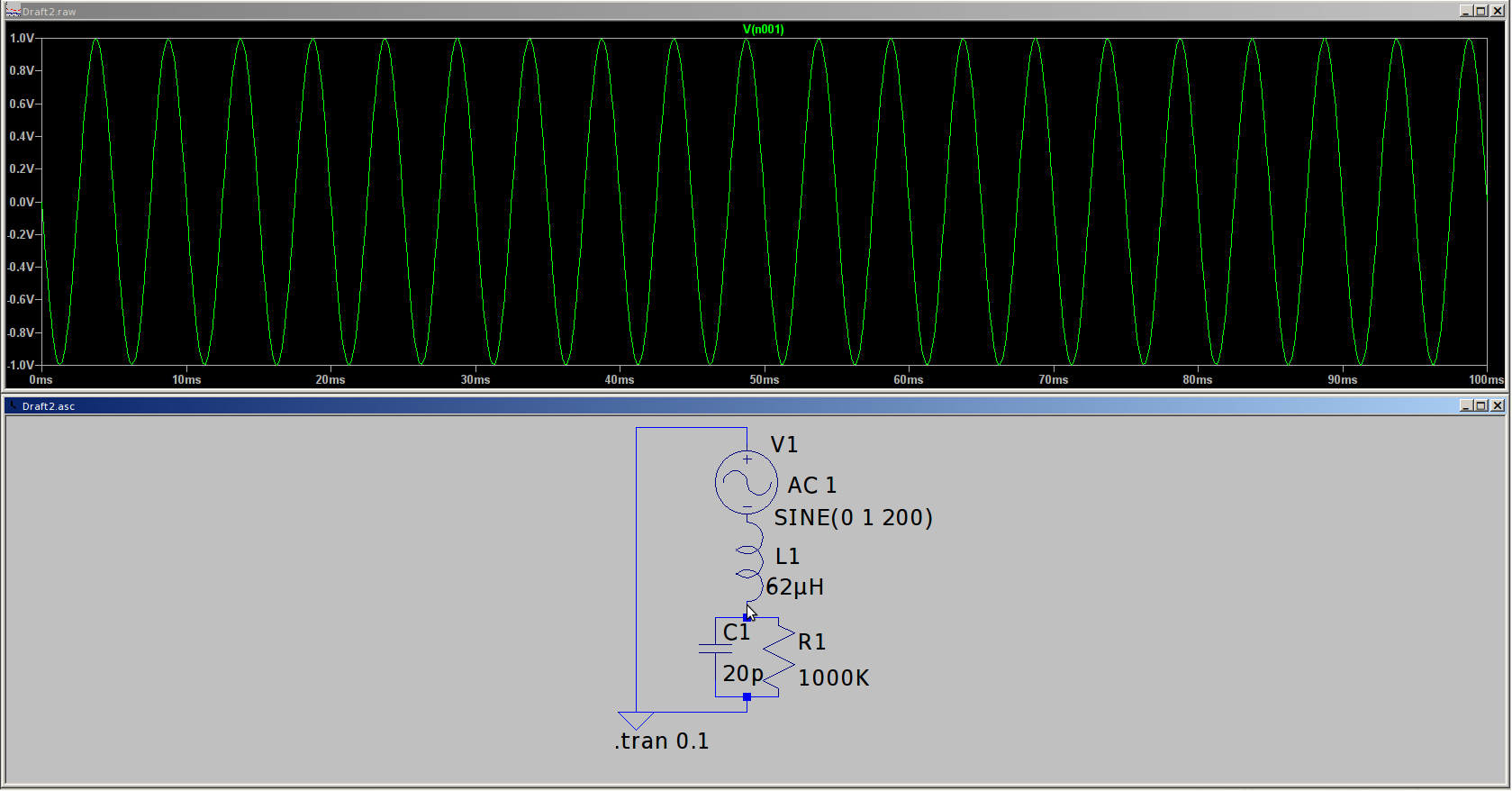
All right, 200Hz, just as before.
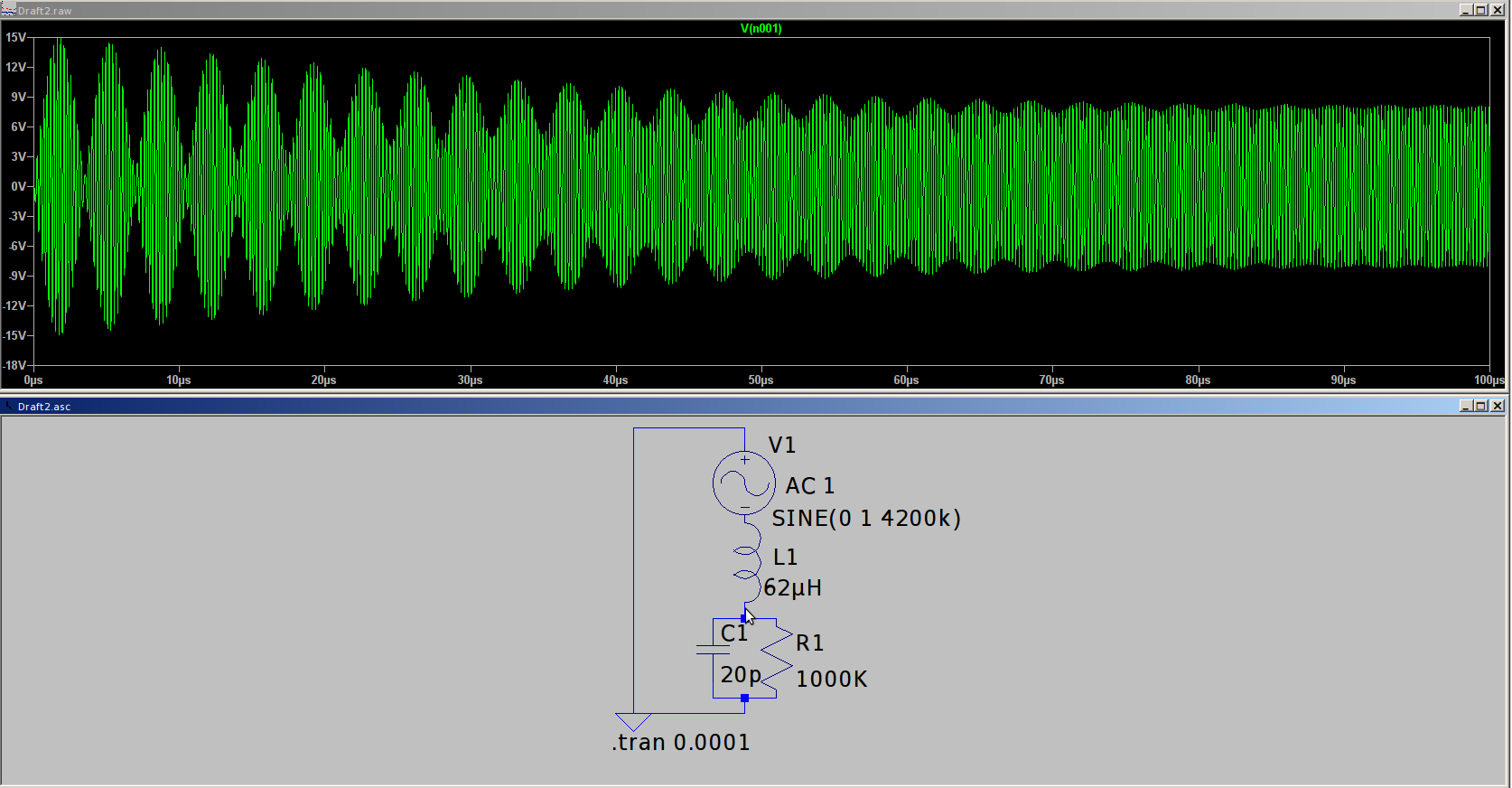
And we have resonance! The frequency is a bit off, but remember, I just have the equivalent circuit of the probe, not of the oscilloscope.

And the resonance increases, as in the measurement..
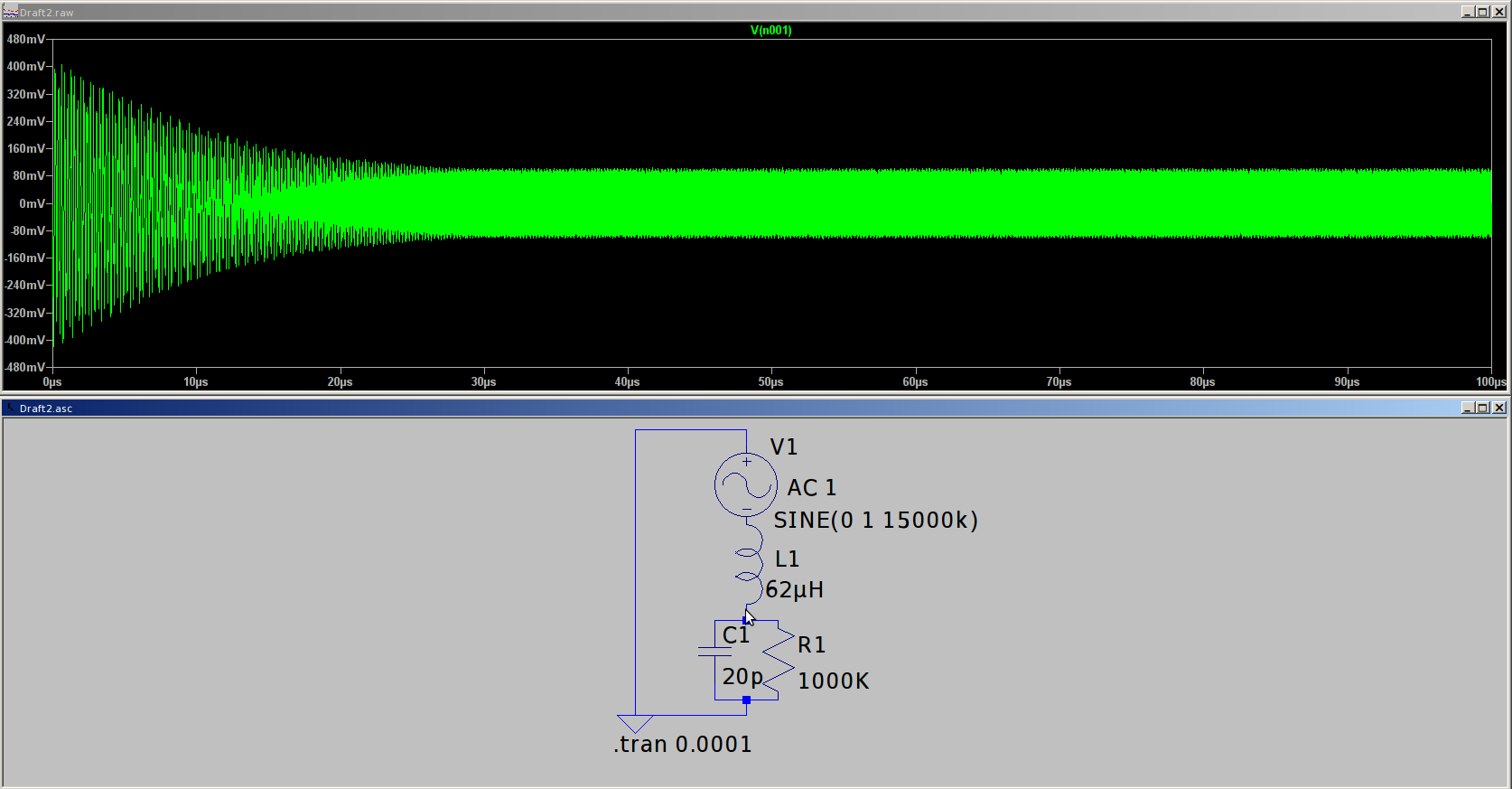
And we have suppression. Now, that seems to explain what happens in the experiment before!
So remember, you should always know your equipment. A probe is a good tool, but if used under improper circumstances, it can really mess up your data. Also: remember to have a probe, which matches your oscilloscope. If I would put my probe here on an oscilloscope, which can work with much higher frequencies, it might happen, that the probe influences the measurement, because it is made to be used for up to 80MHz, not above. That is also one reason, why probes tend to get incredibly expensive for high frequency measurements. It is just very difficult to build them in a way, they will not interfere.